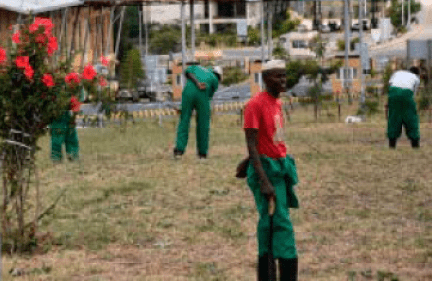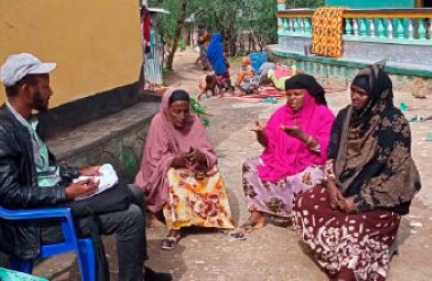The first case of Covid-19 in Uganda was confirmed in March 2020. Immediately, the Ministry of Health established a Covid-19health center at the One- StopBorder Post (OSBP) with Kenya, bringing the public health staff from within the district to provide testing services. A district task force was also formed, which comprised government officials from various departments as well as borderland civil society organisations. Other stakeholders such as the Red Cross were also on board to ensure that the standard operating procedures, such as proper wearing of masks, hand washing and surface disinfection, were observed. TheInternational Organization for Migration supported cross-border joint meetings of relevant stakeholders. The AmalgamatedTransport and General Workers’ Union handed out masks, jerricans and soaps to truck drivers crossing the border and also formed a WhatsApp platform for them to share information.
The outbreak of the pandemic called for change in the way things were done at the border. Steps taken to curb the spread of the virus affected everyone, but truck drivers, traders and travelers were hit in particular. Both the government ofKenya and Uganda ordered the closure of the border and only the truck driver in possession of a valid negative Covid-19certificate were allowed to move across the border.
The general perception was that the truck drivers were most vulnerable toCovid-19 since the nature of their work involves moving from one country to another. This perception made life much harder for the drivers, preventing them from getting out of their trucks to buy something to eat or go somewhere to sleep since the bars and lodges were closed. These problems were further compounded by the fact that the OSBPdid not have the facilities, or the logistics capability, to handle the impact of the pandemic. It did not have enough ambulances to transport those who tested positive. These patients were forced to stay at the border post till the ambulances were back from other treatment centers.
Border closures and movement restrictions also hampered the business of traders who were not able to access goods directly from Kenya and Uganda,rendering them jobless and forcing them to only access goods through informal routes where security patrols would charge them a lot of money to let them get the products. What made the matters worse, though, was the lack of proper coordination and collaboration between the two countries.
The first few months of the pandemic also made life difficult for the hundreds of young women from Uganda who work inNairobi as house-helps. Many of them lost their jobs. Most of them could not afford to take a Covid-19 test and were taken to the quarantine center in Dabani for 14 days. Those who tested negative were allowed to go back to their homes while those who tested positive were taken to treatment centers but only if they wereUgandans—the Kenyans were repatriated for treatment in their own country. Ifthere was a harmonized way of handling this situation, with both countries working collaboratively without discriminationagainst one another’s citizens, theCovid-19 curve could have been flattened in our border areas much quickly.
Initially, the tests were conducted free of charge in both countries. Later,Uganda decided to introduce a fee ofUSD$65—now reduced to $50—whileKenya continued to take samples free of charge for truck drivers but charged crossborder travelers and any other person who wanted to acquire the certificate.This policy worsened the negative impact of the pandemic since the results forCovid-19 testing took two to three days to be released, whereas the drivers were supposed to use them for only 14 days and then go for another test. For other travelers the test results were valid for only five days or 120 hours. This delay the release of results caused the truck drivers to overstay in the border area,causing long traffic jams, and painfully delayed departures.
In conclusion, it is recommended that inter-country collaboration and coordination between Kenya andUganda should be increased, and the two governments must take into account the specific problems caused by the pandemic in the border area. The two countries must ensure proper service delivery to our borderland community inspired by the African Union Convention on Cross-border Collaboration, popularly known as The Niamey Convention. For This to happen, East African countries should consider signing and ratifying theConvention so as to transform the Horn Of Africa borderlands into catalysts for peace, stability, growth, socio-economic and political integration of the continent.



